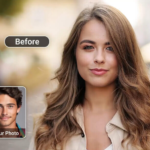Laser hair removal has become a popular option for those looking to reduce unwanted hair on various parts of the body. This treatment uses concentrated light to target and destroy hair follicles, resulting in smoother skin for an extended period. Many people seek this solution for its long-lasting effects compared to traditional methods like shaving and waxing.
Before deciding on laser hair removal, it is essential to know what to expect during the process. Candidates must understand the pre-treatment guidelines and post-treatment care to achieve the best results. Knowing these details can help them feel more at ease and prepared for their sessions.
Understanding the effectiveness of laser hair removal is also crucial. Different skin types and hair colors can influence how successful the treatment will be. With the right information, individuals can confidently choose if this method is suitable for their hair removal needs.
Key Takeaways
- Laser hair removal targets hair follicles using concentrated light.
- Pre-treatment guidelines and post-care are vital for optimal results.
- Treatment effectiveness varies based on hair and skin types.
Understanding Laser Hair Removal
Laser hair removal is a popular technique used to target and reduce unwanted body hair. It uses concentrated light beams to damage hair follicles, leading to slower hair growth. This section explores how this treatment works, the types of lasers used, and key benefits.
How It Works
Laser hair removal involves several sessions to achieve the best results. The procedure uses a laser device that emits light. This light is absorbed by the pigment in hair follicles.
The heat from the laser damages these follicles, which hinders future hair growth. Sessions typically last between 15 to 30 minutes, depending on the treatment area’s size.
Patients often experience mild discomfort, described as similar to a rubber band snap. Each treatment may result in a temporary redness, which fades shortly after. Most individuals need around six treatments for optimal results.
Types of Lasers Used
Different types of lasers are designed for various skin tones and hair types. Some common laser types include:
- Alexandrite Laser: Effective for light to olive skin tones. It has a fast treatment speed.
- Diode Laser: Works well for a variety of skin types. It penetrates deeply, making it effective for darker skin tones.
- Nd Laser: Suitable for darker skin tones. This laser minimizes the risk of skin damage.
Choosing the right type of laser depends on skin type and hair color. A qualified technician will assess these factors to recommend the best option.
Benefits of Laser Hair Removal
Laser hair removal offers several advantages over traditional methods. Some key benefits include:
- Long-Lasting Results: Unlike shaving or waxing, the results from laser treatments last longer.
- Precision: Lasers target specific hair without harming surrounding skin.
- Speed: Each pulse takes only a fraction of a second, allowing many hairs to be treated in one session.
- Reduced Ingrown Hairs: This method decreases the risk of ingrown hairs compared to shaving or waxing.
Many find that laser hair removal provides a convenient solution for managing unwanted hair effectively.
Pre-Treatment Guidelines
Preparing for laser hair removal is essential for achieving the best results. Following specific guidelines will help minimize risks and enhance the procedure’s effectiveness.
Consultation and Candidacy
Before starting laser hair removal, a consultation is necessary. During this visit, the specialist will evaluate skin type, hair color, and medical history. They will discuss expectations and address any concerns.
Candidates for laser hair removal often have dark hair and light skin. This contrast allows the laser to target hair pigments effectively. However, advancements in technology allow for treatment on various skin types. It’s essential to determine if laser hair removal is suitable for the individual through a comprehensive assessment.
Preparing Your Skin
Preparing the skin is crucial before undergoing laser hair removal. Clients should keep the treatment area clean and free from lotions, creams, or perfumes for at least 24 hours before the procedure.
Applying sunscreen daily is also important. This prevents sunburn and protects the skin from damage. Clients should use a broad-spectrum sunscreen with an SPF of 30 or higher.
Additionally, it’s recommended to shave the area being treated one to two days before the appointment. This helps the laser focus on the hair follicle, improving treatment success.
What to Avoid Before Treatment
There are specific actions to avoid before laser hair removal. Clients should not tan, both outdoors and indoors, for at least four weeks before treatment. Tanning increases the risk of skin damage and makes it harder for the laser to target hair.
Other actions to avoid include waxing and tweezing, as these methods remove hair from the follicle. This can make the treatment less effective. Instead, shaving is encouraged.
Finally, clients should stay away from strong skin irritants, such as retinoids and exfoliants, for at least a week prior. These products can make the skin sensitive, increasing discomfort during the procedure.
The Laser Hair Removal Procedure
Laser hair removal is a precise method to eliminate unwanted hair using concentrated light. This section discusses what happens during a session and the necessary safety measures to ensure a safe experience.
During the Session
Before starting the procedure, the area to be treated is cleaned and shaved. This reduces the risk of burns and ensures the laser targets hair follicles effectively.
The technician adjusts the laser settings based on the skin type and hair color. They aim the laser at the skin, where the light gets absorbed by the melanin in the hair. This light transforms into heat, damaging hair follicles to slow future hair growth.
Most sessions last between 15 minutes to an hour, depending on the size of the area. Patients might feel a mild stinging sensation but can use cooling gels for comfort. After the treatment, the area may appear red or swollen, which usually fades quickly.
Safety Measures
Safety is a top priority in laser hair removal. Before the procedure, a consultation is essential. The technician assesses skin type, hair color, and medical history to ensure the treatment is suitable.
Protective eyewear is important during the session to shield the eyes from the laser. The technician should also use a test spot to monitor skin reactions.
Post-treatment care includes avoiding sun exposure and using sunscreen on the treated area. This prevents irritation and discoloration. Patients should also follow any specific aftercare instructions given by the provider for optimal results and safety.
Post-Treatment Care
Proper care after laser hair removal is crucial for achieving the best results. Following treatment, the skin may be sensitive, so it’s important to take steps to protect it immediately. Long-term care can help maintain skin health and enhance the effectiveness of the treatment.
Immediate Aftercare
After laser hair removal, the skin may appear red and swollen. This is normal and should improve within a few hours. To aid in recovery, consider the following:
- Cool Compresses: Apply a cool, damp cloth to the treated area to soothe irritation. Do this for 10-15 minutes as needed.
- Avoid Heat and Sunlight: Stay away from sun exposure, hot baths, saunas, and strenuous exercise for at least 48 hours. Heat can worsen irritation and increase swelling.
- Moisturize: Use a gentle, fragrance-free moisturizer to keep the skin hydrated. This may reduce dryness and enhance comfort.
It’s best to avoid makeup on the treated area for at least 24 hours to let the skin breathe.
Long-Term Skin Care
To maintain skin health after laser hair removal, consistent care is important. Here are key practices to consider:
- Sunscreen: Use a broad-spectrum sunscreen with an SPF of 30 or higher. Apply it daily to protect the skin from UV rays, especially during the healing process.
- Gentle Products: Choose mild cleansers and moisturizers. Avoid harsh scrubs, fragrances, and exfoliants for at least two weeks after treatment.
- Hydration: Drink plenty of water to keep the skin hydrated from the inside out. This can support overall skin health.
Avoid any procedures like waxing or tweezing in the treated area until advised by a professional for optimal results.
Evaluating Treatment Efficacy
When assessing laser hair removal, examining expected results and the factors that can influence these outcomes is essential. Clarity on what to expect can help individuals make informed decisions regarding treatment.
Expected Results
Individuals can expect significant hair reduction after a series of laser treatments. Studies show that diode lasers reduce hair counts effectively within three-month and six-month follow-ups. For instance, a study indicated an average reduction of about 13 to 11 hairs per area treated during these periods.
Typically, a series of sessions are required, often 6 to 8, spaced a few weeks apart. The results may vary based on hair type and skin color. Darker hair on lighter skin tends to respond best.
Post-Treatment Care is also important. Skin may experience temporary redness or swelling. Following aftercare instructions contributes to the effectiveness of the treatment.
Factors Affecting Outcomes
Several factors can influence the efficacy of laser hair removal treatments. Hair Color and Thickness play a critical role. Dark, coarse hair absorbs laser energy better than fine or light-colored hair, leading to improved results.
Skin Type is another crucial factor. Lighter skin types typically respond better due to the contrast with hair color. Individuals with darker skin may require specific laser types to minimize risks.
Treatment Protocols also matter. The experience of the technician and the technology used can impact results. Treatment plans tailored to individual needs often show higher success rates.
Adhering to recommended session intervals can further enhance effectiveness. Timely sessions ensure optimal results without compromising skin safety.














